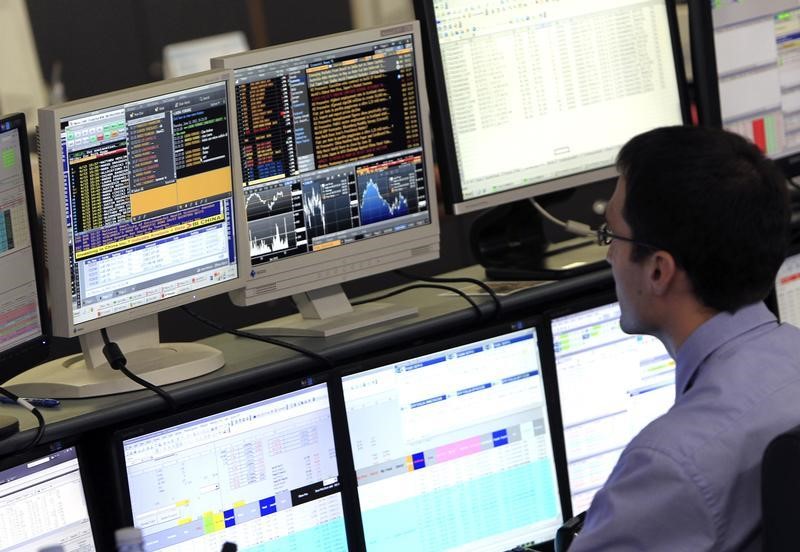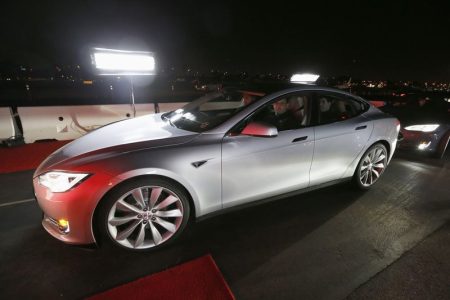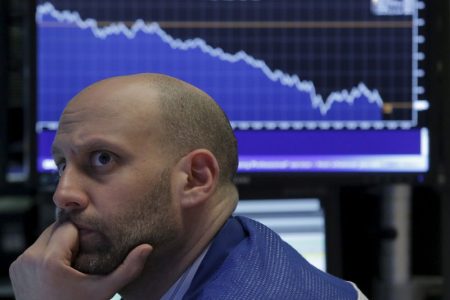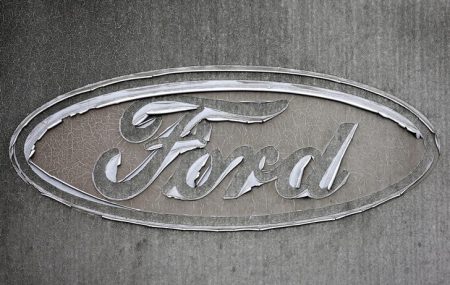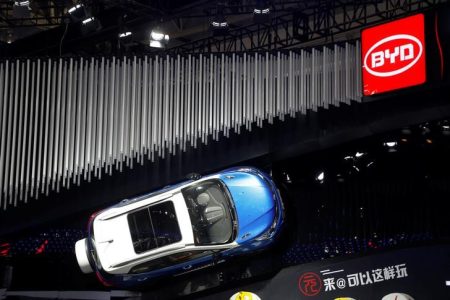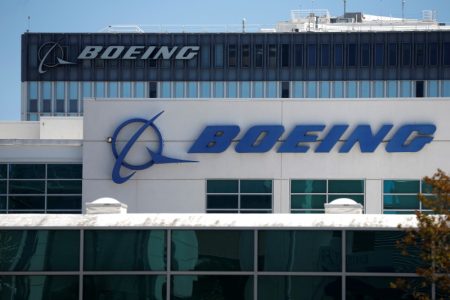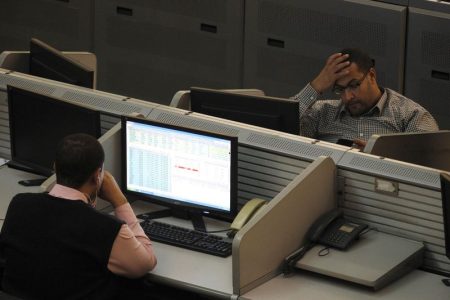© Reuters.
Iluka Resources (ticker: ILU) has reported a robust financial performance for 2023, with a net profit of $343 million and a healthy profit margin of 47%. The company has emphasized its strategy of prioritizing product value over volume, resulting in a significant increase in inventory levels. The mineral sands producer also highlighted its stable operating cash flow and a strong net cash position by the year’s end. Looking ahead, Iluka is finalizing the Front-End Engineering Design (FEED) for its Eneabba rare earths project and remains optimistic about its zircon market outlook.
Key Takeaways
- Iluka Resources announced a net profit of $343 million for 2023 with a 47% margin.
- Inventory increased by 145,000 tonnes, reflecting a focus on product value.
- Operating cash flow stood at $347 million, while capital expenditure was $281 million.
- The company ended the year with a net cash position of $308 million in its mineral sands business.
- Rare earths business is in a net debt position of $83 million.
- Production at Jacinth-Ambrosia to remain stable until its end of life in 2028.
- Zircon market outlook is positive, with first quarter sales on track.
- Iluka is not planning to monetize its Deterra stake and is considering stockpiling rare earths concentrate.
- The company is in discussions with the Australian government regarding the funding of the Eneabba rare earths refinery project.
Company Outlook
- Iluka is close to completing the FEED for the Eneabba project, with capital estimates between $1.7 billion and $1.8 billion.
- Updates on the rare earths business and funding outcomes are expected by the end of March.
- The company is strategically positioned to capitalize on market opportunities.
Bearish Highlights
- Rare earths business currently carries a net debt of $83 million.
- Inventory levels will not be excessively stockpiled beyond 2024.
- Potential delays in funding could affect project timelines.
Bullish Highlights
- Positive outlook on the zircon market with sales for the first quarter on track.
- Stable production settings at Jacinth-Ambrosia until 2028.
- Ongoing discussions with the government could lead to funding for the Eneabba refinery project.
Misses
- The company reported no plans to monetize its Deterra stake at this time.
- Alternative monetization of monazite for offtakes is not being seriously considered currently.
Q&A Highlights
- Iluka is exploring growth options in Australia and North America, as well as considering M&A opportunities in Africa.
- The rare earths pricing environment and potential for contracts in the market were discussed.
- The company addressed the impact of EU anti-dumping investigations on feedstocks, which may benefit its key customers.
- Iluka plans to provide updates on the marketing strategy and funding arrangements for Eneabba later in the quarter.
Iluka Resources concluded its earnings call with an overall optimistic outlook for the year ahead in the mineral sands industry, underpinned by strategic inventory management, anticipated stability in production, and positive market conditions for zircon. The company’s focus on value over volume and its discussions with the Australian government for project funding demonstrate its commitment to long-term growth and financial stability.
InvestingPro Insights
As Iluka Resources (ILU) navigates through a year of strategic inventory management and optimistic market conditions, investors and stakeholders are keen on understanding the company’s financial health and market performance. According to recent data from InvestingPro, Iluka Resources holds a market capitalization of $21.73 billion, underlining its significant presence in the mineral sands industry. Despite a challenging financial metric with a negative P/E ratio of -18.52, indicating that the market has concerns about the company’s future earnings, the company’s strategy of prioritizing product value seems to be paying off with a robust gross profit margin of 65.3% in the last twelve months as of Q4 2023.
InvestingPro Tips for Iluka Resources suggest a financial fortress, as the company holds more cash than debt on its balance sheet, providing it with a strong liquidity position. This is further supported by the fact that its liquid assets exceed short-term obligations. Such a position could offer Iluka the flexibility to navigate through its planned capital expenditures for projects like the Eneabba rare earths project without compromising its financial stability.
For investors looking to delve deeper into Iluka’s financial metrics and market performance, there are additional InvestingPro Tips available. These insights can provide a more nuanced view of the company’s profitability and market trends. To access these insights, visit https://www.investing.com/pro/ILU and consider using the coupon code PRONEWS24 to get an additional 10% off a yearly or biyearly Pro and Pro+ subscription.
With the next earnings date approaching on April 23, 2024, stakeholders will be watching closely to see how Iluka’s strategies and market conditions align with its financial outcomes. The InvestingPro Fair Value estimate of $156.99 also suggests that there could be potential upside to the company’s current share price, providing an interesting point of consideration for investors.
Full transcript – None (ILKAF) Q4 2023:
Operator: Thank you for standing by, and welcome to Iluka Resources 2023 Results Teleconference. [Operator Instructions] Please be advised that today’s call is being recorded. I would now like turn the conference to your host, Mr. Tom O’Leary, Managing Director. Please go ahead.
Tom O’Leary: Hello, and welcome. With me this morning are Adele Stratton, Matt Blackwell and Luke Woodgate. I’ll begin by acknowledging Iluka’s safety performance, which, in 2023, saw a material reduction in total recordable injury frequency rate and a continuing decline in serious potential incidents. I’d like to acknowledge our people for their diligence in delivering these reductions and to their ongoing focus around safety leadership in the field. To the result, more broadly, the approach we’ve taken over the past year reflects the macro challenges Iluka, like many, has encountered, but it also reflects the deliberate steps we’ve taken over a more extended period to enable the company to adapt to the economic and industry conditions we’re confronted with. As demand slowed over the course of 2023, Iluka acted with discipline, prioritizing the value of our products and calibrating production settings and inventory levels accordingly. Prices remain relatively strong and stable, mitigating, to some extent, the influence of higher costs on our margins. In addition, the company benefited from the take-or-pay contracts we have in place to underpin production from our principal synthetic rutile assets since half 2. These contracts were renewed at the start of 2023 for a period of 4 years, providing important revenue certainty. Throughout a lengthy phase of destocking on the part of Western pigment manufacturers, Iluka’s titanium feedstock customers have also demonstrated discipline. More recently, most of those companies have reported on the last quarter and have all reported improving sales volumes along with pigment inventories at minimal levels. They are also closely following antidumping proceedings being undertaken by the European Commission, which are a potential catalyst to reset the European pigment industry. While a smaller swing asset, SR1 is expected to remain offline in 2024. Iluka has retained the workforce to operate this kiln and restart it quickly in the event of demand recovery, industry supply constraints or both. SR1 operated for less than 12 months of its original 18-month campaign following more than a decade offline, but it’s already demonstrated its ability to recover its low capital investment and provides the company with significant production flexibility. In zircon, cautious buying behavior in the second half of 2023 was driven by uncertainty and subdued demand in key markets, especially China. Iluka covered its focus on pricing outcomes for the company’s premium sand with increased sales of zircon-in-concentrate, a capability that provides us the further flexibility to sell a lower quality, high-margin product to select customers. We’ve provided some guidance in our recent quarterly regarding first quarter sales for zircon. By way of update, contracted sand volumes for the quarter stand at approximately 45,000 tonnes. As activity returns post Chinese New Year, we’ll have a better line of sight as to demand there, but it’s a pleasing start to the year nonetheless. I’ll now hand over to Adele.
Adele Stratton: Thanks, Tom, and good morning, everyone. Iluka delivered a net profit of $343 million in 2023, an outcome of the disciplined approach Tom’s just outlined, with margins achieved of 47%. We experienced pressure on our cost base with higher labor costs and consumables combined with lower grades, resulting in increased unit costs. In prioritizing the value of our products, we increased our zircon rutile and synthetic rutile finished goods inventory by 145,000 tonnes across the year or $224 million. This is working capital that will be liberated in future periods, bearing in mind that just represents the cost of the product and not the value we will realize from its sale. Despite this, Iluka generated an operating cash flow of $347 million. We continue to invest in major projects that are critical to our future, including any other refinery in Balranald, both of which were in [Execute], and Wimmera, which is a subject of the definitive feasibility study. Total capital expenditure was $281 million in the year. Turning to the balance sheet. The mineral sands business closed the year in a net cash position of $308 million and the rare earths business in a net debt position of $83 million. You’ll see in our results materials that we’ve started to report these units separately. That’s done in the interest of providing a true view of gearing levels given the nonrecourse status of debt associated with our rare earths business. Full year dividends of $0.07 per share included a final dividend of $0.04. This reflects the pass-through of funds received from our 20% holding in Deterra Royalties, which remains a valuable source of additional financial strength. And with that summary, back to you, Tom.
Tom O’Leary: Thanks, Adele. Before taking questions, I’ll take a few moments to comment about our project pipeline, starting with our progress at Eneabba. We’re now very close to finalizing FEED, and I expect this to be completed in the next few weeks. Since December, we’ve been working to refine that $1.5 billion to $1.8 billion capital estimate range, and you’ll see that we’ve now narrowed guidance to $1.7 billion to $1.8 billion. We intended to provide a rare earths update at the end of March and that this would cover FEED outcomes as well as marketing approach, operational readiness and funding. As we stand here today, I expect funding outcomes will likely dictate the timing of this update. The Australian government is our strategic partner in this development and has been kept up to date with the FEED process, as you’d expect. I’m not going to comment further on those discussions other than to say we’re working with the government to come to a pathway to deliver the refinery. I think it’s fair to say that any other strategic importance in providing a secure Western supply chain for rare earth has only increased in recent times. Following China’s ban on the export of heavy rare earths technology in December, we’ve also seen several further offtake and toll treating arrangements announced for projects which involve downstream processing of Australian-sourced rare earth minerals in China. Elsewhere, work continues at Balranald, where we’ll be deploying our underground mining technology for the first time. We noted in the quarterly our flexibility with regard to Balranald’s commissioning date. That’s essentially an extension of the approach we take to all of our operations. We’ll bring our projects into production when it makes sense to do so in terms of market conditions, and I’d note global supplies of rutile continue to deplete. At Wimmera, our DFS is progressing, and you will have seen that we’ve updated Wimmera’s ore reserve today to reflect our increased geological confidence in the WIM100 deposits. So to conclude, I think we’ve delivered a solid financial result given the economic backdrop. We’re focused on progressing our growth options, and we’ll continue to operate and to make decisions with the prudence and discipline you should expect from us as we strive to deliver sustainable value. Over to you for questions.
Operator: [Operator Instructions] Our first question comes from the line of Rahul Anand of Morgan Stanley.
Rahul Anand: Look, I just wanted to touch a bit upon the production setting changes at JA, which obviously makes sense given market conditions and inventory positioning for yourselves. So obviously, calendar year ’24 to ’26 were previously, at JA, going to be higher than reserve grade in order to prioritize production, and now it seems like you’ve switched back to the reserve grade of around 2.5%. I guess my question is around, is high grading still going to be part of the strategy for this asset as and when demand returns? Or are we looking for a more stable profile from here in terms of your reserve grade and the production grade that you’re going to utilize at the asset? So I’ll stop there for the first question. I’ll get back with a second.
Adele Stratton: Rahul, just in terms of the production guidance, as you’ve noted, our outlook for 2024 is to produce 160,000 tonnes of zircon sand from both, obviously, our Jacinth-Ambrosia and Cataby mine. If we think about managing our market and on inventory, as you rightly noted, you can clearly see that we’ve built 100,000 tonnes of inventory across 2023, and that enables us to satisfy our customer demands going forward. Coming back to your comment with regards to high grading, Jacinth-Ambrosia, we’d be very aware of the remaining life at JA, so through to ’28, ’29 is when that mine will come off, and therefore we have already, if you like, reflected our mine plan between high and low grade when we move back and forth to Ambrosia. So we’re now in the final aspects of that mine depletion. So I don’t think we’ve ever guided that we’d see anything different to the mine reserve grade. So rightly noting last year, closer to 4%; this year, closer to 3%.
Rahul Anand: Got it. Okay. So I guess in terms of production and cost settings, it just seems like this is the new base for the asset till end of life in 2028. Is that a fair way to summarize that?
Adele Stratton: Well, look, we don’t guide production out of JA for the next 5 years. So again, certainly, in terms of looking at that disciplined approach to market, this is the production setting. There’s a little bit of flex in 2024, if we so chose to use that, but grade will determine the output from Jacinth.
Rahul Anand: Got it. Okay. Look, my second question is around the inventory position. Obviously, well flagged by yourselves, but starting to reach peak levels that were previously established in the 2012 cycle. I guess given the spend profile ramping up in calendar year ’24, you’ve got Balranald and then also you’ve got Eneabba, obviously noting that you’ve got the government facility there. At what point does it become critical to start reassessing whether putting JA in care and maintenance is the path that the company needs to go down?
Adele Stratton: Well, so yes, Rahul, just in terms of inventory, I think it would be an incorrect conclusion to reach to think that we’re at the heady heights of where we were in inventory holdings back at the start of the decade. A couple of points to note. We built inventory in 2023, and as you rightly have called out, as I mentioned, 92,000 tonnes of zircon, 50,000 tonnes of synthetic rutile, but bearing in mind that was from extremely low levels of inventory at the start of the year. We made that very clear last year when we reported. So there has been some inventory build. But when you’re looking at the value of inventory on the balance sheet, that is impacted by your unit cost. So as unit costs go up, even if your volumes don’t change, your value on the balance sheet will increase. So what I’d say is our inventory levels certainly aren’t excessive at this point in time.
Rahul Anand: Any sort of critical points, Adele, that you can point out to? Or at what point should we think about sort of project bills taking priority over continuing the asset and continuing to stockpile?
Adele Stratton: Yes. So Rahul, just in terms of continuing to stockpile, we’re not building any heavy mineral concentrate at Jacinth-Ambrosia past 2024. Again, we’re not — yes, that’s not a contemplation point for us.
Operator: Our next question comes from the line of Paul Young of Goldman Sachs.
Paul Young: A question on the zircon market. Tom, I know you’ve indicated that your contracted sales volumes are increasing in Q1, yet the commentary, I guess, you provided on the — on China and Europe, who are your 2 major customers, is a little subdued. We know the market backdrop is still relatively subdued, but just calling out Tronox’ commentary last week on their results call about customers buying again and seeing some actually restocking occurring across the nonceramic applications, particularly zircon in China and destocking having run its course. I’m curious around your commentary from Europe and China. It seems a little bit on the soft side. So just curious about what maybe Tronox is seeing that maybe you’re not?
Tom O’Leary: Yes. Look, I’ll hand over to Matt. Thanks, Paul. But I’ll hand over to Matt to talk about that. But we have called out first quarter sales of zircon year-to-date, which is a pretty good start to the year. But it’s early in the year, so I’d caution getting too carried away with that. But Matt, do you want to talk about the outlook a little more?
Matthew Blackwell: Yes. Sure, Paul. So yes, I did note Tronox made a number of comments there. Regarding the zircon market, it’s not a market that we sell a significant amount to because it’s not a premium zircon market. It tends to be where the lower grade product goes in China, lower margins. What we have seen is a little bit of demand for the premium grade product in China and in Europe, and we’re well positioned to service that market. As Adele pointed out, we didn’t follow the market down last year. And despite others perhaps scrambling towards the last quarter, we chose to stand back a little bit, prioritize value over volume, and that’s enabled us to end this year better positioned than most, I think, to take advantage of any uptick in consumption and then any restocking event — any start to restocking through the markets, whether that’s in Europe or in China.
Paul Young: Okay. And then, Tom, maybe a few questions on the rare earths refinery. I see you’ve tightened up the CapEx range, which is great. I mean I’ve seen your views around the confidence within that. I know you guys do things properly when you estimate maybe better than others. So I’m just curious around the $1.7 billion, $1.8 billion. What gives you confidence in that tight range? Comments on contingency sort of escalation you’ve factored in? Because there’s no guarantees in the industry at the moment just based on the CapEx inflation we’re seeing locally but offshore as well. And then comments around the gap in the funding. I know that you said that you want to leave it there as far as where discussions with government are, but I mean that tells me that discussions are underway as far as topping up that facility potentially with maybe other sources of government debt. So I think it will be certainly helpful to get some sort of further thoughts on that.
Tom O’Leary: Sure. Look, I’ll pass to Adele to talk a little bit about the confidence around the estimates. Inevitably, there’s uncertainty there. But what we have done is spend an awful lot of time on FEED to date, and we have spent time tightening up that broader range to give the updated guide today. But just talking more generally about Eneabba, you talked about the funding gap. We think about that in the context of value, obviously, overall. So look, if I just talk more generally about value and funding, what we are building at Eneabba is an infrastructure asset. And what generates appropriate, [not ready], but appropriate risk-adjusted returns are the usual factors: longevity, pricing, operating costs and having the right capital structure, to your point, around funding. And as we look ahead and contemplate value and funding, there are obviously risks associated with all of these. On longevity, though, since FID with [indiscernible] Balranald, we’ve secured offtake for Northern and its heavies-rich deposit in the Kimberly. We’ve declared a reserve on the heavies-rich Wimmera deposit in Western Victoria. So the [comments] we showed back in 2022 contemplated using only the — are increasingly conservative from a longevity perspective. Pricing is obviously a key driver of returns, and much is made of current low spot prices. Longer term, though, widely held views, as you know, Paul, that supply is going to be materially less than demand, and prices need to be higher to incent supply, particularly if the West wants any sort of longer-term assurance about availability. And on price, we’re all aware of Chinese dominance in the market and its influence on the Asian Metals Index. And again, that’s a factor we take into account in assessing risk-adjusted returns around making a disciplined capital allocation to the refinery. So as we contemplate funding, both we and government are really cognizant of the risks of the project and also its strategic importance, not only from a geopolitical and defense perspective, also from the perspective of its contributions to facilitating global decarbonization. Ultimately, Iluka is a commercial enterprise focused on returns to shareholders rather than an instrument of government policy. So while government and Iluka objectives are aligned around the development of the refinery, discipline around our capital allocation decisions has got to be maintained. We’re currently discussing this broadly with government, and I really won’t be commenting further on that given the ongoing nature of our discussions. Back to you, Adele, on the updated guide on the capital estimate.
Adele Stratton: Yes. Thanks, Tom. And Paul, just in terms of Europe, as you’ve articulated, we’ve spent quite a bit of time focusing and trying to finalize the FEED range and certainly, as you noted, we’re refining that [much] small amount. I think coming to your comment around escalation and contingency, as you’d expect, we’re confident with regards to the ranges that we’re including within that revised capital guide. I think as part of the FEED process, as you’d expect, that includes the combination of going out of [indiscernible] budget quotes, et cetera. So there’s a good degree of support underpinning the number, and we have certainly factored in the ongoing escalation that we’ve seen across the past couple of years and reflected alongside our EPCM contractor, Fluor (NYSE:), what their expectations are around escalation over the next couple of years as we develop that asset. So I wouldn’t really want to get drawn too much in terms of what are the quantums up in the range, but I think in a couple of hundred million dollars in terms of some of those aspects, Paul, is not factoring in today’s prices as they stand.
Operator: Our next question comes from the line of Al Harvey of JPMorgan.
Alistair Harvey: Just following up on the funding. I guess, given Eneabba is contingent on that funding outcome should attract the focus. I guess I just want to understand if your negotiations with the government don’t go quite as planned, would there be potential for you to monetize your Deterra stake? Maybe just take us through how core that is to the portfolio and how you think about diversification across mineral sands, rare earths and I guess, that iron ore exposure.
Tom O’Leary: Look, we’ve spoken about the tariffs many times over the last few years. It’s a source of long-term financial strength for Iluka. And when it’s suggested by a range of investment banks frequently that, that being monetized, we do have to remind folks that, that would be very expensive capital to deploy. We would pay capital gains tax on divestment proceeds, so you can see it would be extraordinarily expensive capital. So it’s not something that is contemplated seriously in that context.
Alistair Harvey: Sure. And maybe one for Adele. Just on the $173 million positive cash inventory movement. Can you just help me work that out? What drove that? I guess inventories have been rising, but you got a positive cash inventory. Was there some high-cost production that drove that movement?
Adele Stratton: Yes, sure. But Al, I’m assuming you’re talking more for the P&L?
Alistair Harvey: Right.
Adele Stratton: Yes. Yes. So if you think about the way the profit and loss work, you obviously charge all of your costs to make your production so they come through the expenses. But if you don’t sell what you’ve made, you need to put that on to your balance sheet. So hence, you reduce those costs through that inventory movement and put that onto your balance sheet, and then you liberate that cash when you actually sell the product. So it’s more just an accounting treatment of reflecting the cost of making the inventory and putting that on your balance sheet, if that make sense.
Operator: Our next question comes from the line of Richard Hatch of Berenberg.
Richard Hatch: I’ve just got two. The first one is just on growth strategy. Over here in Europe, there’s been a few activists are calling for certain mineral sands companies to consider putting themselves up for sale. You’ve had a look at Africa in the past to Sierra Rutile and obviously had a bid for Kenmare back in some sort of about 5 to 10 years ago. Is that a consideration just in terms of African M&A? Or are you quite comfortable with the pretty extensive growth options you’ve got in Australia and North America? That’s the first one.
Tom O’Leary: Yes, we are.
Richard Hatch: Understood. And the second one is just — I’m curious to hear your thoughts on rare earths and the market pricing environment. Obviously, China, you pointed to. It can have pretty stingy impacts on the price. Do you think there’s a scope for a bifurcated rare earth pricing market where perhaps there’s an annual contract a bit like thermal coal, something like that, that sort of plays out for certain Western producers just to perhaps then give a bit of a stable [indiscernible] for the rare earths price in the West to enable some of these projects that are struggling to get funded to go? Not yours in particular, but just interested to hear your thoughts on how that pricing environment might work.
Tom O’Leary: Yes, I certainly do think there’s scope to that over time. I think in the new return, that’s more likely to be contracts, bilateral contracts, by private treaty runs and sort of an exchange — a bifurcated market where Western product is sold under some sort of exchange, but that may certainly evolve at the time. We’re planning on giving a little — a bit of an update on our marketing strategy later in the quarter potentially, so we’d look to elaborate on that somewhat at that point.
Operator: Our next question comes from the line of Dim Ariyasinghe.
Dim Ariyasinghe: Just touching on what Al said before in terms of monetizing Deterra, maybe not Deterra, but you mentioned offtakes for concentrate. Can we talk about that? Like is there a potential for you guys to go back and monetize the monazite? I noticed Hastings recut their deal last week. MP’s now out of the market. Do you have the ability to do that and is maybe relatively more attractive right now? I’ll come back with the next one.
Tom O’Leary: Yes. I mean that would certainly be an alternative if we were not to pursue the refinery, but that’s not one that we’re contemplating seriously at this point.
Dim Ariyasinghe: And then — all right. And then — but I guess, like maybe just following on Balranald, [indiscernible] it might look like it’s up and running before Eneabba and you’ll get rare earths concentrate out of that. Is the idea just then to stockpile or continue stockpiling concentrate until Eneabba is up and running?
Tom O’Leary: Yes, that’s right. That’s what we’re [contemplating].
Dim Ariyasinghe: Okay. And then the next question just on markets. You touched on the anti-dumping investigations in the EU pigment. Can you just maybe help me understand how that has ramifications for feedstocks in the markets you’re directly selling to?
Tom O’Leary: Sure. I’ll pass that over to Dim — I’m sorry. I’ll pass it over Matt. Sorry. Key customers who will be the beneficiary of those measures. But, Matt?
Matthew Blackwell: Thanks, Tom. So, Dim, the way we think about this is what we’ve seen over the last 1.5 years is — and what is being alleged by pigment producers in Europe is that there’s been a flood of — or sort of an increase of below cost or dumped product into Europe, which is taking their market share away. They haven’t necessarily followed the price down, and there’s actually a gap of almost $1,000 a tonne between the Chinese product and the European-produced product. We’re alleging that they’re separate harm, and that, that dumping margin is somewhere between 45% and 65%. That’s what’s articulated in their filing to the EU Commission. So an outcome could be that duties are imposed of between 45% and 60%, or the injury margin, there’s all sorts of areas that go into that and calculations, which would then reduce the amount, which would make it less attractive for consumers of pigment in the EU to buy that product coming from China, revert back to domestic production, which would then increase the operating rates of those assets in Europe. And some of those assets is both sulfide and chloride that is affected, but we ask suppliers to lease all assets, sometimes 5 assets in Europe, major assets, and so we would expect to see them increase their operating rates, which we think is good for the long-term state of that — of the pigment industry in Europe and also good for our feedstock — our high-grade feedstock offtakes, which become more in demand when people are running at higher rates.
Operator: Our next question comes from the line of Glyn Lawcock of Barrenjoey.
Glyn Lawcock: Tom, it’s Glyn. Look, firstly, I just wanted to talk a little bit about the capitalization and the inventory movement. I’m just sort of looking at it. You had a smaller inventory build in the second half relative to the first, but you had the capitalization was almost double. Can you just help me unpack that a little bit?
Adele Stratton: Yes. That depends in terms of what inventory you’re putting into — on the balance sheet, really. So as you’d expect, our different operations have different cost settings. And for your capitalization is impacted by that inventory that goes onto the balance sheet. So you’d imagine in the second half, as we have idled both the kiln due to building heavy mineral concentrate coming out of Cataby, that mine is still operating at full tilt, and therefore that will be a component of what goes on the balance sheet.
Glyn Lawcock: Okay. I mean I guess there was a bit more zircon inventory. I guess is the highest cost component is the HMC at Cataby, that’s your highest unit cost when you’re putting it to inventory?
Adele Stratton: Well, let’s reflect. When we initially undertook the Cataby investment back in 2017, the reason that Matt and the team put in underpinning contracts was because that was a higher cost operation. So say yes, [indiscernible], obviously, as grades decline at Jacinth, you need to move more material in order to get the same volume, if you like. So that impacts unit cost going forward for Jacinth, but historically, it’s been blessed with very high growth.
Glyn Lawcock: Okay. So there’s nothing funny about the large inventory capitalization in the back half, essentially?
Adele Stratton: No. There’s nothing funny.
Glyn Lawcock: Okay. And then just on — you’ve given us Q1 contracted sales for zircon sand for Q1. Obviously, Q1 is — seasonally is usually the weak one in the year. Is that how you feel? And I mean we’re only 6 weeks out from Q2. Do you have a feel for what Q2 contracted volumes look like? Are they lifting sequentially, do you think?
Matthew Blackwell: Glyn, I’ll answer that. Look, we’re positively — as we noted, volumes are up from Q1. We’re going to have a better understanding of how the rest of the year plays out in the month ahead. We wouldn’t normally — most people wouldn’t be normally talking about Q2 volumes at this stage. We’re still in February. And we’re going to have a better understanding of the outlook for the year post Chinese New Year. As you know, that just finished last week. And so as operations ramp up in China and the European market starts to warm up, we’ll get a better outlook. But you’re right. Q1 is normally the weaker quarter.
Glyn Lawcock: All right. And Tom, can I just squeeze in a quick last one just to clarify some of the earlier discussions we’ve been having. Just on Eneabba, are we now committed to moving forward? Or is there something that could occur to see you delay the project? Or is it full steam ahead as far as you’re concerned?
Tom O’Leary: Yes, Glyn, we’ve identified the — our latest view on the capital estimate, and we’ve also been very clear about the funding arrangements on announcement in 2022. So we are in discussions with government around funding, and I’ll update further on those in due course, as I’ve said.
Glyn Lawcock: So there is a chance you could delay, is that what you’re saying, if you don’t get the funding?
Tom O’Leary: Glyn, I’m not going to be drawn further on that.
Operator: [Operator Instructions] Our next question comes from the line of Anthony Barich of S&P Global.
Anthony Barich: I guess I was going to ask you a question about that European demand that you flagged earlier, but you answered that question, I think. Perhaps — I don’t know whether there’s anything — I mean, what you mentioned before about the Western supply chains and the efforts to diversify there for rare earths. You kind of fleshed it out a bit before, but is there anything new there that you’ve noticed in the market besides the usual of what people are aware of? Sorry, did you hear?
Tom O’Leary: Yes, I heard. The answer is no.
Operator: Our next question comes from the line of Chen Jiang of Bank of America.
Chen Jiang: A few follow-up, please. So for FY ’24, zircon production, from your comments, it seems like it’s still too weak market conditions for Iluka to support the comp prices as well as depleting reserves from JA. I’m wondering, so this year, the comp production guidance is not a good reference for future zircon production when the market turns into positive outlook than your forecast? Is that a fair assumption? I have a few more after this.
Adele Stratton: Yes. So if you think of our production outlook, obviously, we’ve got production out of Cataby and Jacinth in the 2024 guidance. As we’ve noted, we’re not running our mineral separation plant at full capacity in 2024, but also reflecting 2025, we’ll be introducing the Balranald deposit into our production stock. So it’s probably not a true reflection of future outlook, but we’re not going to be drawn too much either in terms of what that looks like ’25 and beyond.
Chen Jiang: Sure. Sure. Understood. And then a few follow-up on the Eneabba refinery, please. I understand you cannot comment further discussion with the government, especially the funding gap. I’m just wondering, if you are discussing with the government and this discussion has been ongoing, is the main — government funding is the only funding option for Iluka?
Tom O’Leary: Yes. Look, we will be updating further on these matters, as I say, later in the quarter.
Chen Jiang: Sure, sure. I understand, Tom. I understand, Tom. I’m going to maybe — let’s move to the market. Tom or Adele, not sure if you can comment on the CapEx intensity on [indiscernible] project outside of China, like for — especially for projects like Eneabba outside of China. Do you think CapEx intensity in the rest of the world is higher than China for building an integrated refineries?
Tom O’Leary: Yes. I think that’s a likely expectation, but again, we’ll elaborate further on that in time.
Operator: Thank you. And that does conclude our conference. I’d like to turn the call back over to Tom O’Leary for any closing remarks.
Tom O’Leary: Look, thank you for your attention today. As I said earlier, I think it’s a good start to the year in mineral sands. I don’t want to get carried away about that, and we look forward to addressing you further on the funding and value of our key project in Eneabba later in the quarter, with any luck. Thank you.
Operator: Thank you. Ladies and gentlemen, this does conclude today’s conference. Thank you all for participating. You may now disconnect. Have a great day.
This article was generated with the support of AI and reviewed by an editor. For more information see our T&C.
Read the full article here





